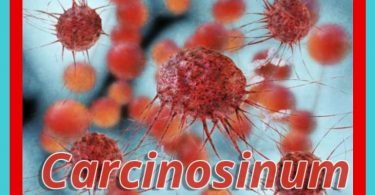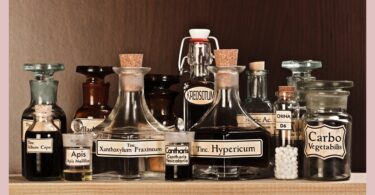Excerpted from: Case quizzes and clinical hints for devoted students of classical homeopathy – Petr Zacharias
Clinical hint 5 – On how to make a proper differential diagnosis
When it comes to differential diagnosis, don´t look for vague differences, but find the clear differentiating points and understand what is similar and what is different as a whole. Do not make a differential diagnosis mechanically or based on particulars. In the next clinical hint you will see this in practice.
Clinical hint 6 – On Gelsemium and Asarum in nervous breakdown
A remedy which is very often confused with Asarum is Gelsemium. When you have a patient who has been studying for very extensively in order to prepare themselves for examination and finally ends up in a state of a nervous breakdown with trembling and crying, they do not need Gelsemium but Asarum. This is especially so when you confirm strong sensitivity to noises, which Gelsemium does not have.
The state of Gelsemium is one of dullness, weakness and trembling. The trembling is caused by weakness in Gelsemium and this weakness is felt mostly in the lower extremities while Asarum represents the state of strong nervous excitability due to mental overexertion. This excitability affects the entire nervous system causing the patient to tremble. Most affected is the auditory nerve.
Clinical hint 7 – On the importance of past symptoms
When present symptoms are vague and don’t point to a remedy, it can be very useful to check symptoms from the past. There is a very famous case of Dr. M. Tyler of a man with Epilepsy. She took the case but nothing peculiar or specific was found regarding present symptoms. Dr. Tyler investigated the case history in depth and found that epilepsy had developed as a result of suppressed skin eruptions. Then she began to ask about the type of skin eruption and found a clear picture of Mezereum, which promptly cured the man‘s epilepsy, (causing the original eruption to reappear). Such cases confirm again and again how important is the understanding of theory.
Clinical hint 8 – On materia medica and repertory
Remember that there is no repertory in the world which is 100% reliable. Therefore don´t rely too much on it. Instead of depending on a repertory, study materia medica every day. When you study a remedy, try to grasp the pattern, rather than just memorizing symptoms and compare this remedy with other remedies which are most similar. Try to realize differences between the remedies and understand what makes each remedy unique and different it from others.
Clinical hint 9 – On Sepia and Lilium tigrinum
We all know that Sepia is one of the greatest polychrests frequently indicated in women (although in some cases in men). Today, I would like to share some important notes about this remedy in comparison with other remedies having some similarity with Sepia. I don’t want to repeat the usual symptomatology but rather to put an emphasis some important clinical hints.
Many homeopaths don´t consider Sepia to be an important remedy in children and actually, it is often confused with Carcinosinum as both have a strong desire for chocolate, amelioration during thunderstorm and by dancing. Also, both are very sensitive to criticism. The important difference here is that Sepia has a very special ability to sense the weaknesses of others, and can be very spiteful. Carcinosinum children do not want to hurt others in the vast majority of cases. Sepia children are emotionally vivacious and easily excited and the usual picture of deadening of emotions and weakness comes much later in life, after being hurt emotionally or when hormonal changes set in.
Another remedy easily mistaken for Sepia in adults is Lilium tigrinum as both have strong effects on the uterus, causing the well known bearing down sensation, as if all organs would fall. Both remedies have this sensation especially when standing. In Sepia we see amelioration of this sense of prolapsus when sitting with legs crossed while in Lilium tigrinum she is better by lying down.
Both are very easily offended but in very different ways. Sepia is irritable due to lack of energy. In Sepia, the patient is exhausted and then irritability develops. The spells of irritability are often followed by weeping which relieves the patient. Sepia can have very serious depression with weeping and does not know why. During such a state, she can develop suicidal thoughts which are relieved by weeping. Sepia is irritable due to her weakness. She is physically weak, there is a sense of weakness in the uterus. Eventually she find herself in an apathetic state and her hormonal system is stagnating. The hormonal stasis is the underlying cause of a vast majority of symptoms including lack of enjoyment and finally aversion to sex.
In Lilium tigrinum it is other way round. We see a woman with strong sexual energy at the beginning that has been suppressed by her will. She feels an anxiety of conscience in regard to her sexuality and therefore that is exactly the part she must suppress in order to prevent herself
from such thoughts. The suppressed sexuality eventually sublimates as excessive energy that is looking for an outlet. On the one hand she is very sexual, but on the other hand she has a strong sense of morality and these two opposite forces create a strong inner conflict. When the sexual energy is not satisfied and/or suppressed, she becomes snappish. She feels very energetic, hurried, and must keep herself busy all the time. Her snappishness, irritability and over-reactivity have their origin in suppressed sexuality. When she finally reaches such a state, you will find the history of no sex, as well but this energy, hurriedness and strong desire for activity. Sepia also desires activity but she is weak and when she performs some violent motion it gives her energy. Lilium tigrinum needs activity to get rid of her excess energy.
Petr Zacharias is the founder and main teacher at the Prague College of Classical Homeopathy. If you are a homeopathic graduate or practitioner and would like to constantly grow your knowledge and make accurate prescriptions, join Petr´s new online educational platform. You can read about it here:







More excellent clinical hints and differential m. m. from Petr Zacharias. These are very practical tips.